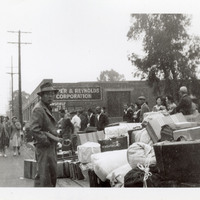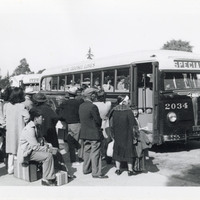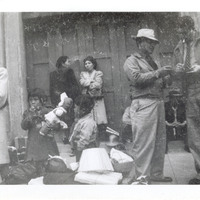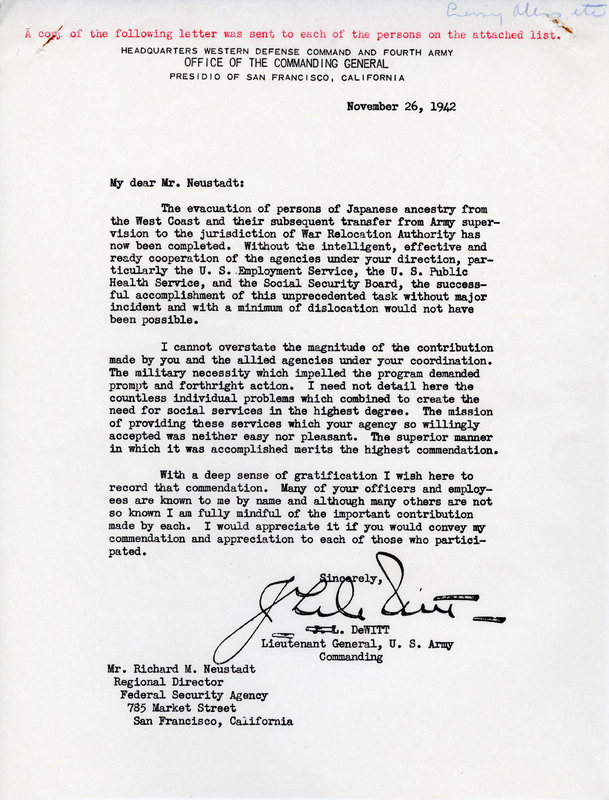MASS REMOVAL
While mass removal and incarceration were initiated by the Federal government, the State of California assisted with the process. Within state government, the War Services Bureau was created to meet the “war-needs” of the State. According to the Biennial Report for the Department of Social Welfare for July 1, 1940 to June 30, 1942, such needs were defined as assistance for civilians and evacuees from Hawaii and other areas, and “the provision of social services to enemy aliens and citizens of Japanese ancestry during their registration and removal from military areas.”
Movement
As the Japanese were being removed from the military zones, the War Services Bureau provided various kinds of public assistance with multiple control offices throughout the State. Each county also had a role in providing assistance to people being removed. Staff from county welfare offices were placed on the federal payroll during this time.
Aid
The War Services Bureau was involved in the interpretation and clarification of policies on the availability of and eligibility for assistance to Japanese being incarcerated.
There were several handbooks created by the Department of Social Welfare and the federal government that explained the policies involved in this work, like the “Wartime Civilian Control Administration Manual”, the “War Services Handbook”, and “Policies and Procedures Governing the Administration of Services and Assistance to Enemy Aliens Affected by Governmental Action: A Handbook for State Agencies”
These handbooks explain the duties and functions of cooperating agencies as well as methods for filing public assistance claims and other financial reports. Once the Japanese arrived at an internment camp, aid from the State ceased and care was taken up by the federal government. All aid was refunded by the federal government.
Hospitals
The Bureau also coordinated the movement of individuals within state institutions, such as state hospitals or orphanages. In the case of transfers from hospitals, the Department followed the policy created by the federal government. A letter from Azile Aaron of the Federal Bureau of Public Assistance directed that removal would be deferred for individuals in hospitals until the patient was able to leave the hospital.
Orphanages
Orphanages presented a different challenge in mass removal. In California, there were three orphanages that cared for orphans of Japanese descent. These institutions were the Salvation Army Home, Maryknoll, and the Japanese Children’s Home.
The Chairman of the Board of Directors of the Japanese Children’s Home, Dr. T. G. Ishimaru, was very active in advocating for the care of these children, as many of the staff members of these institutions were incarcerated due to exclusion orders. In his correspondence with the Department of Social Welfare, Dr. Ishimaru sought a strategy for moving the residents of the Japanese Children’s Home and discussed the appropriateness of the planned Manzanar Children’s Village as a home for these children.
Dr. Ishimaru continued to be in contact with the Department of Social Welfare throughout the incarceration, and even assisted with resettlement of children back into the reopened Japanese Children’s Home after the war ended.
Federal Response
General John L. DeWitt, head of the Western Defense Command and main supporter of incarceration, commended Richard M. Neustadt, the Regional Director of the Social Security Board, for his handling of a successful "evacuation."







